Leopard Gecko Safety Tips are essential for keeping your pet reptile safe from external threats. Whether you’re a first-time gecko owner or experienced with reptiles, ensuring their environment is secure protects them from predators, environmental hazards, and other risks. In this guide, we’ll explore eight key strategies to enhance your gecko’s safety and create a stress-free habitat.
Table of Contents
1. How Leopard Gecko Safety Tips Begin with the Right Enclosure
A secure enclosure forms the cornerstone of protecting your leopard gecko.
- Material Matters: Opt for durable glass or acrylic tanks resistant to escapes and accidents.
- Tight Fitting Lids: Use a screen lid with a secure locking mechanism to prevent access by curious pets or children.
- Size Requirements: Provide a 20-gallon tank or larger to ensure enough space for hides, decorations, and free movement.
This is the first step in ensuring their safety within a controlled environment.
2. Proper Placement for Optimal Safety
The placement of your gecko’s enclosure plays a significant role in minimizing threats.
- Quiet and Low-Traffic Areas: Choose locations away from loud noises, which can stress geckos.
- Stable Platforms: Place the tank on a sturdy, vibration-free stand to prevent accidental tipping.
- Avoid Sunlight and Drafts: Keep the tank away from direct sunlight and areas prone to sudden temperature changes.
These steps help maintain a calm and stable living area for your pet.
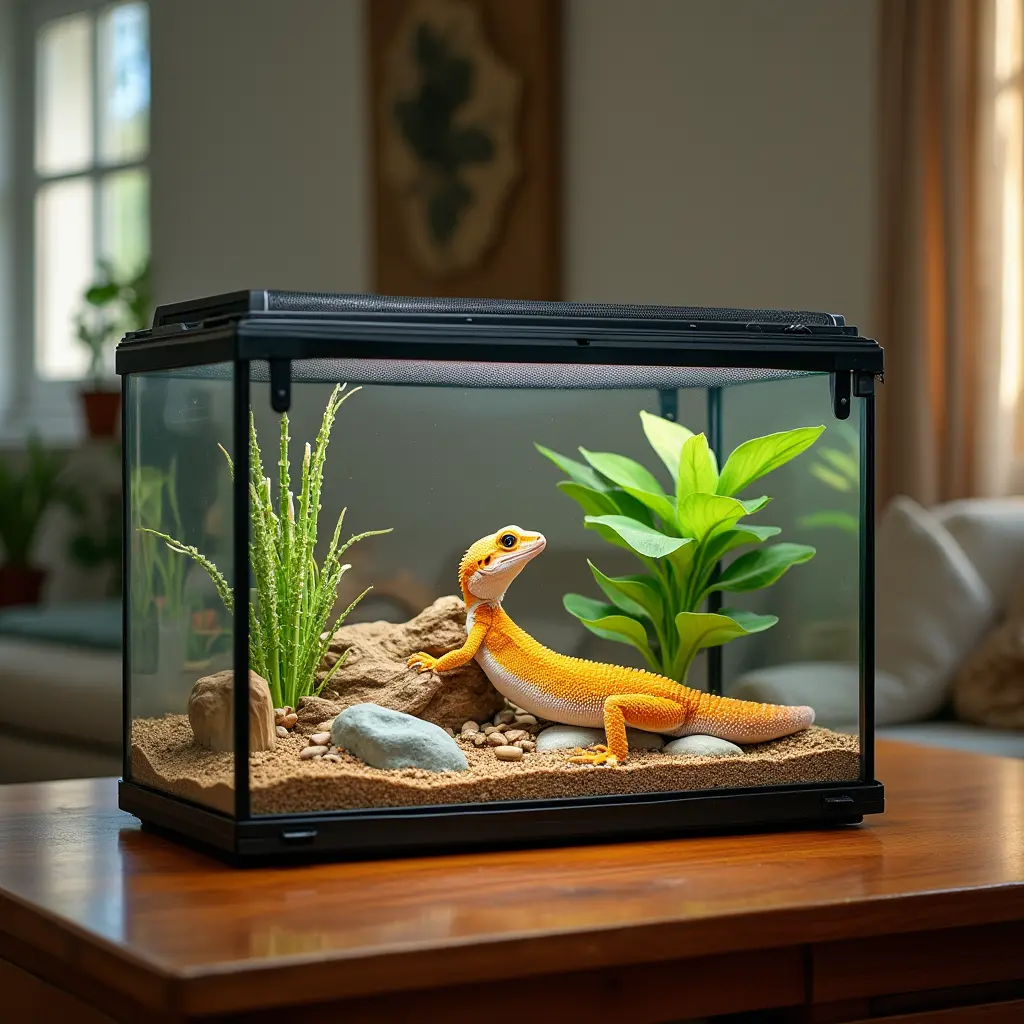

3. Predator-Proofing Measures
Leopard Gecko Safety Tips wouldn’t be complete without addressing predator risks.
- Domestic Pets: Cats, dogs, and even birds of prey can pose threats. Keep other animals away from the enclosure.
- Pest Control: Regularly inspect the room for pests like spiders or rodents that may harm your gecko.
- Physical Barriers: If needed, add barriers or screens around the enclosure for extra protection.
This ensures peace of mind and a safer environment.
4. Ensuring Internal Safety in the Enclosure
The inside of the enclosure must be as safe as the outside.
- Appropriate Substrate: Avoid loose sand and use safer options like tiles, paper towels, or reptile carpets.
- Secure Décor: Anchor hides, rocks, and climbing structures to prevent accidental injury.
- Essential Hides: Include at least three hides—warm, cool, and moist—for comfort and stress reduction.
A thoughtfully designed interior reduces risks and enhances your gecko’s comfort.
5. Hygiene and Maintenance: A Key Part of Leopard Gecko Safety Tips
Cleanliness plays a vital role in preventing disease and stress.
- Daily Cleanup: Remove waste and uneaten food to avoid bacteria growth.
- Deep Cleaning Routine: Clean the tank and all accessories every 1-2 weeks using reptile-safe disinfectants.
- Temperature and Humidity Monitoring: Ensure the enclosure maintains ideal conditions: warm zones at 88–92°F and 30-40% humidity.
Proper maintenance keeps your gecko healthy and stress-free.
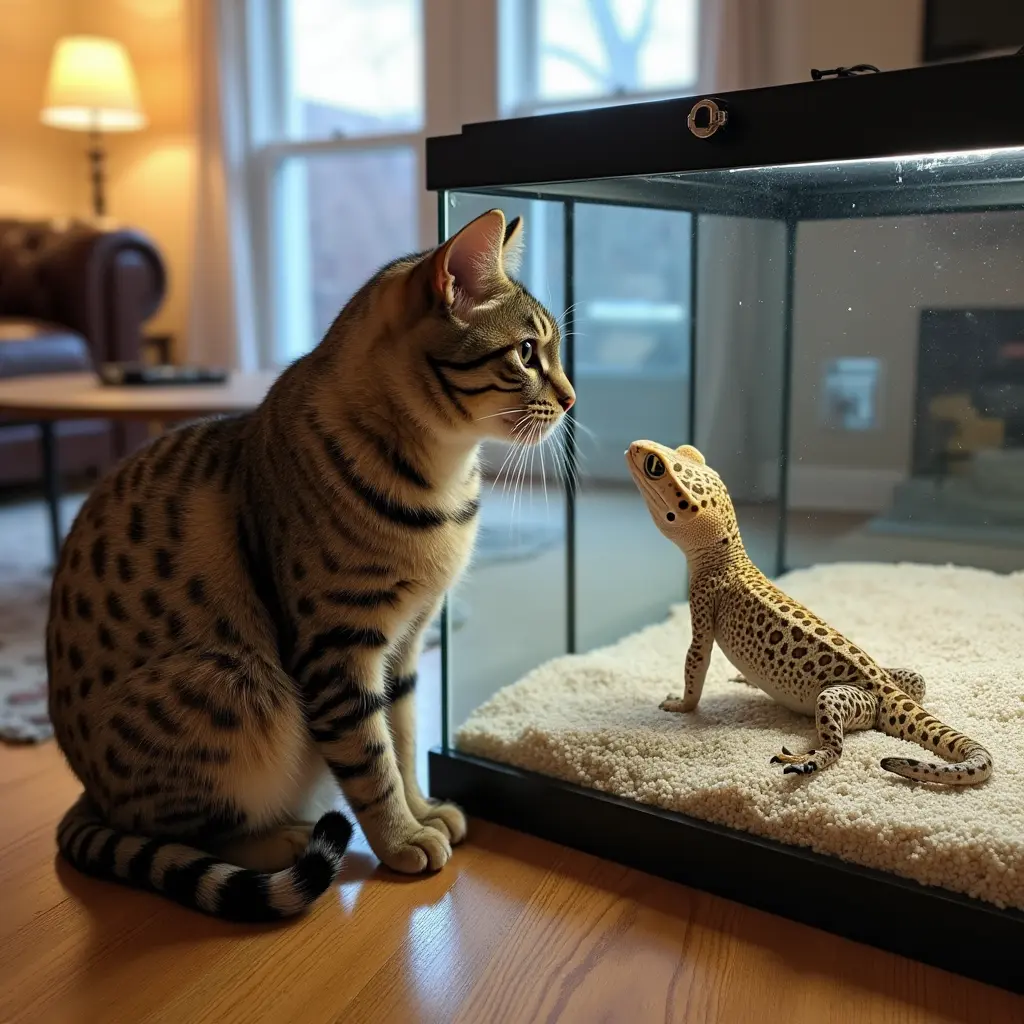
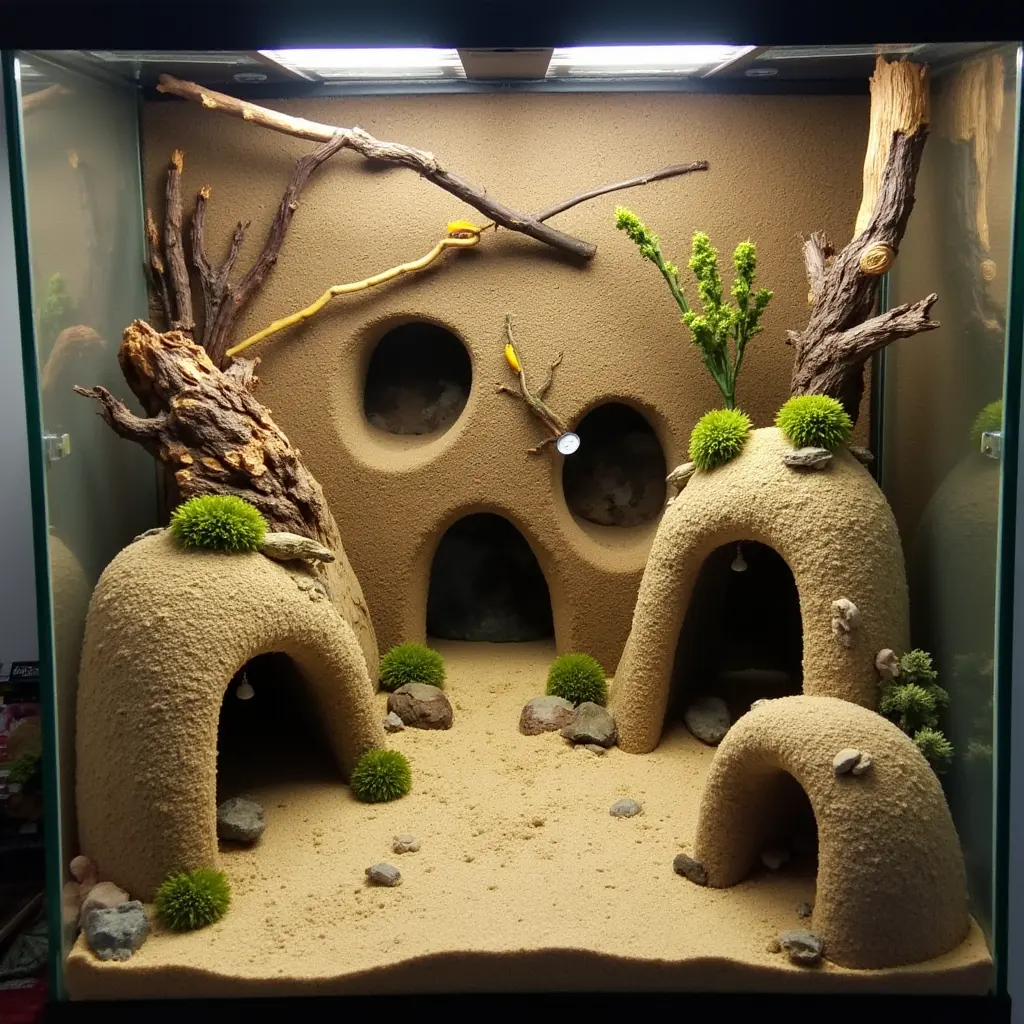
6. Handling with Care
Safe handling is an integral part of Leopard Gecko Safety Tips.
- Be Gentle: Always approach from the side or below, as overhead motions mimic predator attacks.
- Limit Frequency: Avoid overhandling; observe for signs of stress like tail-waving or excessive hiding.
- Educate Family Members: Teach children and other family members the proper way to interact with geckos.
By handling responsibly, you reduce stress and build trust with your pet.
7. Emergency Preparedness for Unexpected Threats
Being prepared can make a significant difference in critical situations.
- Power Backup: Keep heat packs and battery-operated heating tools for power outages.
- Reptile First Aid Kit: Equip your kit with antiseptics, tweezers, and other essentials.
- Vet Access: Have the contact information of a reptile veterinarian ready for emergencies.
Preparedness ensures you can act swiftly to protect your gecko.
8. Supervised Exploration Outside the Tank
Leopard geckos benefit from occasional exploration, but it must be done with care.
- Designated Play Areas: Create a confined, soft, and hazard-free area for your gecko to roam.
- Constant Supervision: Never leave your gecko unattended during free-roaming sessions.
- Inspect for Risks: Check the area for sharp objects, wires, or small gaps where your gecko could get stuck.
This controlled exploration adds enrichment to your gecko’s life while maintaining safety.
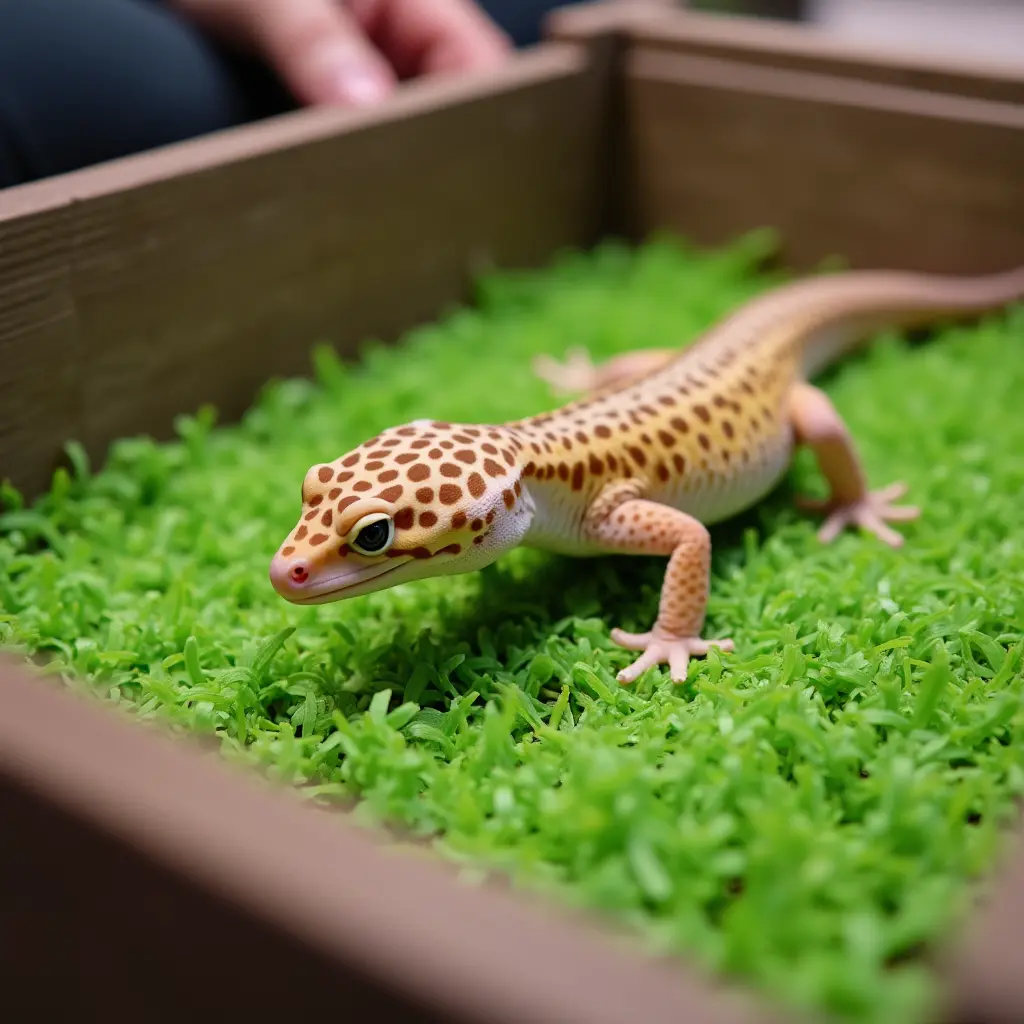
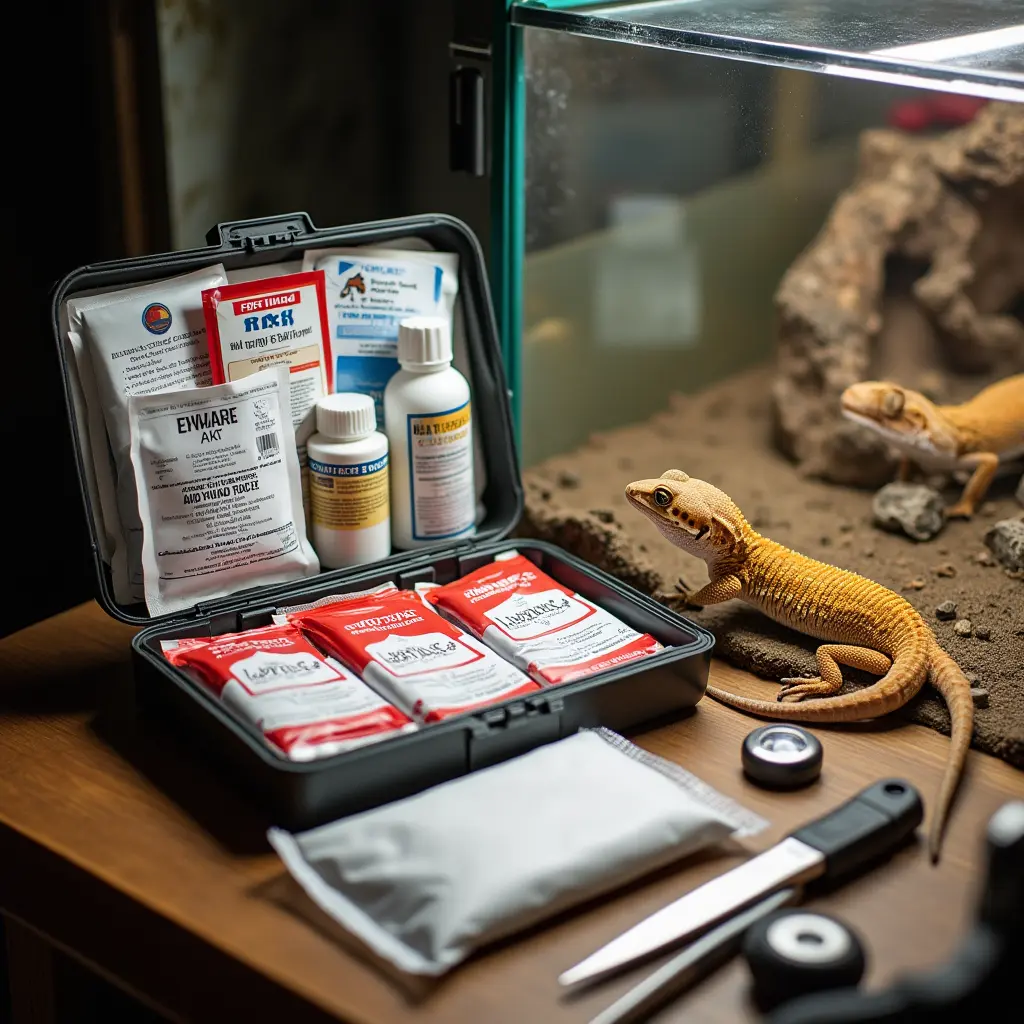
Conclusion
By following these Leopard Gecko Safety Tips, you can create a secure and stress-free environment for your pet. From predator-proof enclosures to emergency preparedness, these steps not only protect your gecko but also strengthen your bond. A safe gecko is a happy gecko, ensuring a long, healthy life for your reptile companion.